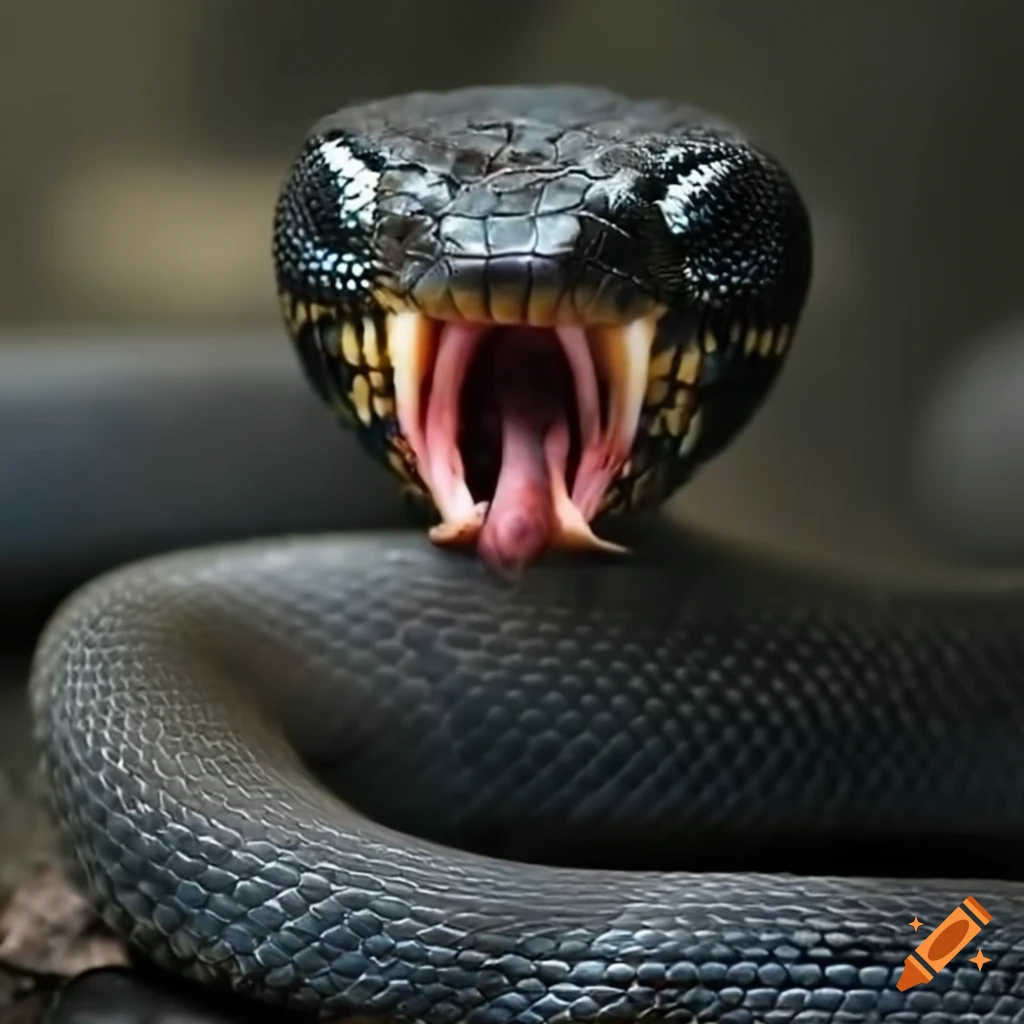Viper Car Brand: Unleashing the Untamed Beast of American Performance
Viper Car Brand: Unleashing the Untamed Beast of American Performance cars.truckstrend.com
An Engaging Introduction
In the pantheon of automotive legends, few names evoke the raw, visceral power and unadulterated passion quite like "Viper." More than just a car, the Viper is a statement – a bold, unapologetic declaration of American muscle, engineering prowess, and a relentless pursuit of speed. Born from a vision to create a modern-day Shelby Cobra, the Viper burst onto the scene in the early 1990s, instantly carving out its niche as an icon of high-performance driving. It wasn’t about refined luxury or cutting-edge technology; it was about pure, unadulterated power delivered through a massive V10 engine, a no-nonsense interior, and a design that screamed aggression.
Viper Car Brand: Unleashing the Untamed Beast of American Performance
The Viper Car Brand, primarily known through the Dodge Viper, represents a unique chapter in automotive history. It defied conventional wisdom, offering an almost untamed driving experience that demanded respect and skill. Its importance lies not only in its breathtaking performance but also in its enduring legacy as a symbol of American ingenuity and a reminder that sometimes, less is more – less electronic nannies, more direct driver engagement. This article delves deep into the essence of the Viper, exploring its history, engineering, ownership experience, and its lasting impact on the automotive world.
The Genesis of an Icon: From Concept to Reality
The story of the Viper begins in 1988, when Chrysler’s then-president, Bob Lutz, envisioned a modern interpretation of the classic Shelby Cobra. He wanted a back-to-basics, high-performance sports car that emphasized raw power and a direct connection between driver and machine. The concept car, dubbed the "Viper RT/10," debuted at the 1989 North American International Auto Show in Detroit, generating immense public excitement.
Under the leadership of Lutz and designer Tom Gale, a dedicated "Team Viper" was assembled, working with unprecedented speed and autonomy. The initial prototype was running within a year of the concept’s debut. The key to the Viper’s identity was its monstrous engine: a colossal 8.0-liter (later 8.3L and 8.4L) V10, derived from Chrysler’s truck engine but heavily modified by Lamborghini (then owned by Chrysler) for high-performance automotive use.
The first production Viper, the RT/10 roadster, rolled off the assembly line in 1992. It was a no-frills machine: no external door handles, no air conditioning (initially), no traction control, and side exhausts that could singe an unsuspecting leg. It was raw, loud, and incredibly fast, instantly establishing the Viper as a serious contender in the supercar arena and cementing its place as a true American exotic.
Unleashing the Beast: Performance and Engineering Philosophy

The heart of every Viper is its formidable V10 engine. This powerplant defines the car’s character, delivering immense torque and horsepower that propelled it to supercar-level performance figures.
- Engine Evolution:
- Gen 1 & 2 (1992-2002): 8.0L V10, starting at 400 hp and evolving to 450 hp.
- Gen 3 & 4 (2003-2010): 8.3L V10 (500 hp), later 8.4L V10 (600 hp).
- Gen 5 (2013-2017): 8.4L V10, peaking at 645 hp.

- Power Delivery: Unlike many modern sports cars that rely on turbochargers or superchargers, the Viper’s V10 was naturally aspirated, providing linear, predictable, and immense power delivery throughout the rev range. This resulted in a unique driving sensation – a constant surge of acceleration that few cars could match.
- Chassis and Suspension: The Viper’s chassis evolved from a relatively simple tubular steel frame to more advanced designs incorporating aluminum and carbon fiber. Its suspension was always tuned for performance, often providing a firm, direct ride that translated every road imperfection but offered exceptional grip and cornering capabilities.
- Braking: As power increased, so did the need for stopping power. Later generations featured large, high-performance Brembo brakes, ensuring the Viper could shed speed as effectively as it gained it.
- Transmission: Exclusively offered with a manual transmission (typically a Tremec T-56 or TR-6060), reinforcing its driver-focused philosophy. This commitment to manual shifting further cemented its appeal among purists.

The Viper’s engineering philosophy was always about brute force combined with essential handling dynamics. It was never designed to be the most technologically advanced or refined car, but rather the most thrilling and engaging.
Design Language: Form Meets Function in Aggression
The Viper’s design is unmistakable – a long, muscular hood, short rear deck, wide stance, and aggressive lines that embody its predatory namesake.
- First Generation (RT/10 and GTS): The RT/10 roadster featured an iconic, minimalist design with side exhausts and a curvaceous body. The GTS coupe, introduced in 1996, added a distinctive "double-bubble" roof and a more aerodynamic profile, becoming an instant classic and often considered the most beautiful Viper.
- Second Generation (SRT-10): The 2003 redesign brought sharper lines, a more angular appearance, and a significant increase in power. Both roadster and coupe variants were offered.
- Fifth Generation (SRT Viper/Dodge Viper): The final iteration, launched in 2013, refined the aggressive styling with more sophisticated lines, improved aerodynamics, and a slightly more refined interior, while retaining the signature long hood and wide stance.
Every curve, vent, and scoop on a Viper serves a purpose, whether for cooling, aerodynamics, or simply to intimidate. The design is a direct reflection of its performance capabilities, making it instantly recognizable and endlessly captivating.
Driving the Viper: An Unfiltered Experience
Driving a Viper is not for the faint of heart. It’s an unfiltered, raw, and immensely rewarding experience that demands respect and skill.
- The Power: The sheer torque of the V10 means acceleration is instant and relentless. It’s a car that can easily overwhelm inexperienced drivers, especially without modern electronic nannies.
- The Sound: The V10’s roar is legendary – a deep, guttural growl that transitions into a high-pitched scream as the RPMs climb. It’s a symphony of power that resonates through the cabin.
- The Handling: While powerful, Vipers are surprisingly well-balanced. With wide tires and a low center of gravity, they offer immense grip. However, the lack of extensive electronic aids means that managing that grip, especially at the limit, is entirely up to the driver. Oversteer is easily provoked, making precise throttle control crucial.
- The Interaction: The manual transmission, direct steering, and firm suspension create an intimate connection between the driver and the road. Every input has a direct and immediate effect, making the Viper one of the most engaging cars to drive.
Practical Advice for Driving a Viper:
- Respect the Power: Never underestimate the V10. Learn to manage the throttle, especially in corners or wet conditions.
- Enroll in Driving School: High-performance driving courses are invaluable for learning car control and understanding the Viper’s dynamics safely.
- Proper Tires: Ensure you have high-quality, performance-oriented tires in good condition. They are your primary connection to the road.
- Regular Maintenance: A well-maintained Viper is a safer Viper. Adhere to all service intervals.
- Be Aware of Surroundings: The Viper is a magnet for attention, both good and bad. Drive responsibly and be mindful of other road users.
Viper Generations and Models
The Viper evolved over five distinct generations, each with its unique characteristics:
- Gen 1 (SR I, 1992-1995) – RT/10: The original roadster, raw and uncompromising. Minimalist interior, side exhausts, and often no A/C or power windows.
- Gen 2 (SR II, 1996-2002) – RT/10 & GTS: Introduced the iconic GTS coupe with its double-bubble roof, improved chassis, and slightly more refined interior. Power increased, and A/C became standard. The ACR (American Club Racer) variant also emerged, focused on track performance.
- Gen 3 (ZB I, 2003-2006) – SRT-10: A complete redesign with sharper styling, a larger 8.3L V10, and a more modern interior. Both roadster and coupe were available.
- Gen 4 (ZB II, 2008-2010) – SRT-10: Primarily an engine update, boosting the V10 to 8.4L and 600 hp. Subtle exterior changes and improved components. The ACR variant of this generation set numerous track records.
- Gen 5 (VX I, 2013-2017) – SRT Viper / Dodge Viper: The final generation, initially branded as "SRT Viper" before returning to "Dodge Viper." Featured a redesigned chassis, carbon fiber body panels, and 640-645 hp. The ACR variant of this generation became the ultimate track weapon, setting lap records at various tracks worldwide.
Ownership and Collectibility: Important Considerations
Owning a Viper is a commitment. It’s not a daily driver for most, but rather a special occasion car or a track toy.
- Maintenance: While generally robust, Vipers require specialized maintenance due to their unique engine and performance components. Expect higher costs for parts and labor compared to a standard car. Tires, brakes, and fluids are critical and costly.
- Insurance: Due to their performance and value, insurance premiums can be substantial.
- Fuel Economy: The V10 is thirsty. Expect single-digit MPG figures under spirited driving.
- Collectibility: Many Vipers, especially low-mileage examples, special editions (like ACRs), and early GTS coupes, are considered highly collectible. Their limited production runs and the discontinuation of the model have contributed to their status as future classics. Prices for pristine examples have steadily appreciated.
- Community: The Viper boasts a passionate and active owner community (e.g., Viper Owners Association), which is an invaluable resource for advice, parts, and camaraderie.
Actionable Insights for Prospective Buyers:
- Pre-Purchase Inspection (PPI): Absolutely essential. Have a qualified Viper specialist or experienced mechanic inspect the car thoroughly.
- Research Specific Generations/Models: Each generation has its quirks and strengths. Decide which aligns best with your budget and desired experience.
- Check for Modifications: While some mods are fine, heavily modified cars might indicate harder use or potential issues.
- Service Records: Look for comprehensive service history.
- Test Drive: Experience the car yourself. Be aware of any unusual noises, vibrations, or handling characteristics.
- Budget Beyond Purchase Price: Factor in insurance, maintenance, tires, and potential repairs.
The Viper’s Legacy and Future
The production of the Dodge Viper ceased in August 2017, primarily due to declining sales, increasing safety regulations (specifically the lack of side curtain airbags which were difficult to integrate into its design), and a shift in Stellantis’s (formerly FCA) strategic focus. Its discontinuation marked the end of an era – a time when raw, unbridled performance was prioritized above all else.
Despite its end, the Viper’s legacy is secure. It stands as a testament to American automotive daring, proving that a major manufacturer could produce a supercar that rivaled the best from Europe. It pushed boundaries, inspired a generation of enthusiasts, and left an indelible mark on motorsports, especially with its dominant run in endurance racing (e.g., Le Mans).
While a direct successor is highly unlikely in the age of electrification and autonomy, the spirit of the Viper lives on in the hearts of its fans and in the high-performance vehicles that continue to emerge from American manufacturers, albeit with more technological sophistication. The Viper will forever be remembered as the untamed beast, the car that dared to be different, and the ultimate expression of raw power.
Viper Car Brand: Estimated Used Market Price Table (USD)
Given that the Viper is no longer in production, prices are for the used market and vary significantly based on year, mileage, condition, specific model/trim (e.g., ACR, special editions), and historical significance. The ranges below are approximate and subject to market fluctuations.
| Viper Model / Generation | Production Years | Engine | Original HP | Estimated Used Price Range (USD) | Key Features / Notes |
| :———————– | :————— | :—– | :———- | :——————————- | :—————————————————————————————————————————————————————————————————————————————————————————————————————————————————————————————————————————————————————————————————————————————————————————————————————————————————————————————————————————————————————————————————————————————————————————————————————————————————————————————————————————————————————————————————————————————————————————————————————————————————————————————————————————————————————————————————————————————————————————————————————————————————————————————————————————————————————————————————————————————————————————————————————————————————————————————————————————————————————————————————————————————————————————————————————————————————————————————————————————————————————————————————————————————————————————————————————————————————————————————————————————————————————————————————————————————————————————————————————————————————————————————————————————————————————————————————————————————————————————————————————————————————————————————————————————————————————————————————————————————————————————————————————————————————————————————————————————————————————————————————————————————————————————————————————————————————————————————————————————————————————————————————————————————————————————————————————————————————————————————————————————————————————————————————————————————————————————————————————————————————————————————————————————————————————————————————————————————————————————————————————————————————————————————————————————————————————————————————————————————————————————————————————————————————————————————————————————————————————————————————————————————————————————————————————————————————————————————————————————————————————————————————————————————————————————————————————————————————————————————————————————————————————————————————————————————————————————————————————————————————————————————————————————————————————————————————————————————————————————————————————————————————————————————————————————————————————————————————————————————————————————————————————————————————————————————————————————————————————————————————————————————————————————————————————————————————————————————————————————————————————————————————————————————————————————————————————————————————————————————————————————————————————————————————————————————————————————————————————————————————————————————————————————————————————————————————————————————————————————————————————————————————————————————————————————————————————————————————————————————————————————————————————————————————————————————————————————————————————————————————————————————————————————————————————————————————————————————————————————————————————————————————————————————————————————————————————————————————————————————————————————————————————————————————————————————————————————————————————————————————————————————————————————————————————————————————————————————————————————————————————————————————————————————————————————————————————————————————————————————————————————————————————————————————————————————————————————————————————————————————————————————————————————————————————————————————————————————————————————————————————————————————————————————————————————————————————————————————————————————————————————————————————————————————————————————————————————————————————————————————————————————————————————————————————————————————————————————————————————————————————————————————————————————————————————————————————————————————————————————————————————————————————————————————————————————————————————————————————————————————————————————————————————————————————————————————————————————————————————————————————————————————————————————————————————————————————————————————————————————————————————————————————————————————————————————————————————————————————————————————————————————————————————————————————————————————————————————————————————————————————————————————————————————————————————————————————————————————————————————————————————————————————————————————————————————————————————————————————————————————————————————————————————————————————————————————————————————————————————————————————————————————————————————————————————————————————————————————————————————————————————————————————————————————————————————————————————————————————————————————————————————————————————————————————————————————————————————————————————————————————————————————————————————————————————————————————————————————————————————————————————————————————————————————————————————————————————————————————————————————————————————————————————————————————————————————————————————————————————————————————————————————————————————————————————————————————————————————————————————————————————————————————————————————————————————————————————————————————————————————————————————————————————————————————————————————————————————————————————————————————————————————————————————————————————————————————————————————————————————————————————————————————————————————————————————————————————————————————————————————————————————————————————————————————————————————————————————————————————————————————————————————————————————————————————————————————————————————————————————————————————————————————————————————————————————————————————————————————————————————————————————————————————————————————————————————————————————————————————————————————————————————————————————————————————————————————————————————————————————————————————————————————————————————————————————————————————————————————————————————————————————————————————————————————————————————————————————————————————————————————————————————————————————————————————————————————————————————————————————————————————————————————————————————————————————————————————————————————————————————————————————————————————————————————————————————————————————————————————————————————————————————————————————————————————————————————————————————————————————————————————————————————————————————————————————————————————————————————————————————————————————————————————————————————————————————————————————————————————————————————————————————————————————————————————————————————————————————————————————————————————————————————————————————————————————————————————————————————————————————————————————————————————————————————————————————————————————————————————————————————————————————————————————————————————————————————————————————————————————————————————————————————————————————————————————————————————————————————————————————————————————————————————————————————————————————————————————————————————————————————————————————————————————————————————————————————————————————————————————————————————————————————————————————————————————————————————————————————————————————————————————————————————————————————————————————————————————————————————————————————————————————————————————————————————————————————————————————————————————————————————————————————————————————————————————————————————————————————————————————————————————————————————————————————————————————————————————————————————————————————————————————————————————————————————————————————————————————————————————————————————————————————————————————————————————————————————————————————————————————————————————————————————————————————————————————————————————————————————————————————————————————————————————————————————————————————————————————————————————————————————————————————————————————————————————————————————————————————————————————————————————————————————————————————————————————————————————————————————————————————————————————————————————————————————————————————————————————————————————————————————————————————————————————————————————————————————————————————————————————————————————————————————————————————————————————————————————————————————————————————————————————————————————————————————————————————————————————————————————————————————————————————————————————————————————————————————————————————————————————————————————————————————————————————————————————————————————————————————————————————————————————————————————————————————————————————————————————————————————————————————————————————————————————————————————————————————————————————————————————————————————————————————————————————————————————————————————————————————————————————————————————————————————————————————————————————————————————————————————————————————————————————————————————————————————————————————————————————————————————————————————————————————————————————————————————————————————————————————————————————————————————————————————————————————————————————————————————————————————————————————————————————————————————————————————————————————————————————————————————————————————————————————————————————————————————————————————————————————————————————————————————————————————————————————————————————————————————————————————————————————————————————————————————————————————————————————————————————————————————————————————————————————————————————————————————————————————————————————————————————————————————————————————————————————————————————————————————————————————————————————————————————————————————————————————————————————————————————————————————————————————————————————————————————————————————————————————————————————————————————————————————————————————————————————————————————————————————————————————————————————————————————————————————————————————————————————————————————————————————————————————————————————————————————————————————————————————————————————————————————————————————————————————————Disclaimer: The Dodge Viper, a high-performance sports car, was produced by Dodge (a division of Stellantis, formerly FCA) from 1991 to 2017. This article discusses the "Viper Car Brand" in the context of this iconic vehicle. All price information is for the used market as the car is no longer in production and reflects estimated ranges, which can vary wildly based on condition, mileage, trim, and market demand.
Frequently Asked Questions (FAQ) about the Viper Car Brand
1. What is the "Viper Car Brand"?
The "Viper Car Brand" primarily refers to the Dodge Viper, a high-performance sports car produced by Dodge (part of Chrysler/FCA/Stellantis) from 1991 to 2017. It’s known for its powerful V10 engine, aggressive styling, and raw, driver-focused experience.
2. Why was the Dodge Viper discontinued?
The Viper was discontinued in 2017 due to several factors, including declining sales, the high cost of production, and increasingly stringent safety regulations (specifically, the difficulty of integrating side curtain airbags into its unique design without a complete redesign).
3. Is the Viper difficult to drive?
Yes, the Viper is considered a challenging car to drive, especially for inexperienced drivers. Its massive power, high torque, and historically limited electronic driving aids (like early traction control or stability control) mean it demands a high level of driver skill and respect. It’s not a forgiving car at the limit.
4. What kind of engine does the Viper have?
All generations of the Dodge Viper were powered by a large-displacement V10 engine. It started as an 8.0-liter, then increased to 8.3-liter, and finally to 8.4-liter in its last generation, producing up to 645 horsepower.
5. Is the Viper a good daily driver?
Generally, no. The Viper is not designed for daily commuting. Its firm ride, loud exhaust, limited practicality (small trunk, two seats), high fuel consumption, and demanding driving characteristics make it more suitable as a weekend car, track car, or collector’s item.
6. Are Vipers expensive to maintain?
Yes, Vipers can be expensive to maintain. Parts specific to the Viper’s high-performance nature (e.g., tires, brakes, specialized engine components) are costly. Labor rates for specialized mechanics can also be high. Regular maintenance is crucial to keep it running optimally.
7. Is the Viper a good investment?
For certain models, yes. Low-mileage, well-preserved examples, especially special editions like the ACR (American Club Racer) or early Gen 1 GTS coupes, have shown significant appreciation in value and are considered highly collectible. However, like any collectible car, market fluctuations can occur.
8. What’s the difference between the RT/10 and the GTS?
The RT/10 (Road & Track, 10 cylinders) was the original Viper model, a roadster (convertible) produced from 1992. The GTS (Gran Touring Sport) was a coupe version introduced in 1996, featuring a distinctive "double-bubble" roof, improved aerodynamics, and often more power than its RT/10 counterpart from the same era. The GTS is widely considered a design icon.
9. Did the Viper have an automatic transmission option?
No. All production Dodge Vipers were exclusively offered with a manual transmission, reinforcing their driver-focused, purist appeal.
10. What does "ACR" mean for a Viper?
ACR stands for "American Club Racer." These are track-focused variants of the Viper, featuring significant performance upgrades such as enhanced aerodynamics (large wings, splitters), stiffer suspension, lighter wheels, and specialized tires. ACR models are designed for optimal lap times and are among the most capable track cars ever produced.
11. Where was the Viper manufactured?
The Dodge Viper was manufactured at the Conner Avenue Assembly Plant in Detroit, Michigan, throughout its production run.
12. Can I still buy a new Viper?
No, you cannot buy a new Dodge Viper from a dealership as production ceased in 2017. Any Viper available for purchase today would be a used model.






